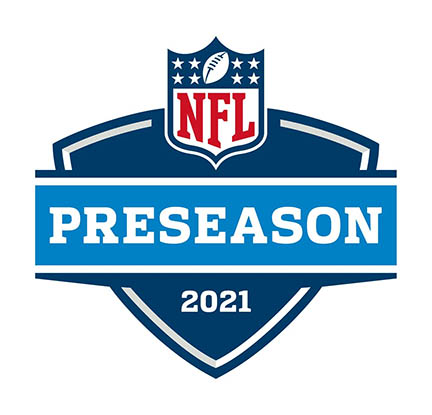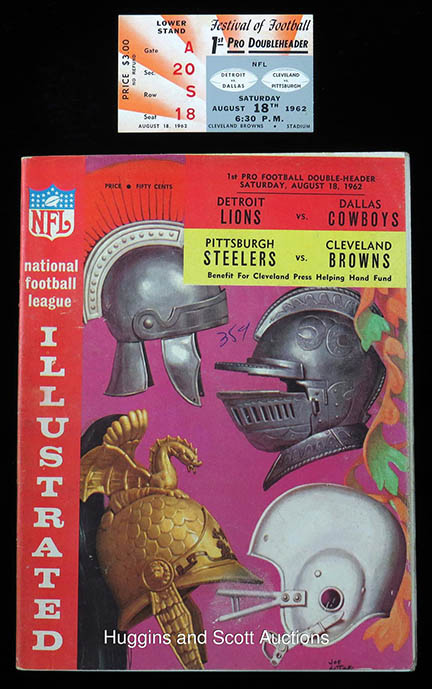NFL Football is Underway

NFL football is underway.
But it’s the pre-season variety. Not very exciting.
So why are we spending any time on it?
Two reasons.
The first, is to put them in perspective.
Pre-season is of value to the teams who can see things, especially in judging the players who have a chance to win a roster spot.
Most teams already know who will be around for the start of the season, with the exception of a few openings.
Starters hardly play. Why risk injury?
No team game plans for these contests. The offense and defense they will display in game 1 is drilled solely in practices.
What is really ridiculous is the way the media over-emphasizes events in these games as if it were the playoffs.
They rate the performances of rookie quarterbacks, and other players and forget it’s just one preseason game, with little regard to the fact that backups are on the field and that there is no game plan to execute.
So, pre-season games have, for the most part, little meaning.
Now, if a long-shot drafted or undrafted rookie stands out, and continues to do so for the three practice games, this becomes news.
There are now only three pre-season games with the new 17-game schedule which goes into effect this year.
It used to be four.
At one time there were six, which brings us to the second reason these warm-ups are on this week’s menu.
There was a time these games carried far more significance.
They were called “exhibition” games and fans and the media paid extra attention.
As noted, there were six of them. Many, were played in neutral cities.
Kind of a barnstorming arrangement.
Exhibition double header
I remember when the Steelers played one of their exhibition games in Shreveport, Louisiana.
Terry Bradshaw had been the first pick in the draft by Pittsburgh, Shreveport was his hometown. So the Steelers scheduled a game there and and it was a big treat to those folks to see their pride and joy play as a pro. And he played most of the game.
Fans in smaller cities throughout the country got to see NFL action in person. It was special.
Then, there was Art Modell, a television executive who became the owner of the Cleveland Browns.
Art Modell
Modell, was a showman, who looked to do things on grand scale.
So, he invented the doubleheader in 1962, a radical innovation.
There would be two games played back-to-back at Cleveland’s Municipal Stadium. The first one drew 77,683 fans. It matched Detroit Lions against the Dallas Cowboys in the first game, and the Browns against the Pittsburgh Steelers in the nightcap.
Notable in that first doubleheader, was the introduction of Ernie Davis, the Heisman Trophy winner, and overall first choice in the draft, picked by the Browns. Davis received cheers by the big crowd when he came out on the field in street clothes.
Ernie Davis and Art Modell
But Ernie Davis, a star running back at Syracuse, who led them to the national championship in 1959, never suited up to play a single down for the Browns. He was diagnosed with leukemia that summer, and tragically passed away the following May.
On a personal note, I got to know Davis while I was an undergrad at SU.
It was in my sophomore year , his senior year. We were both in a writing class, and were assigned to talk about a life experience.
I suggested to Davis that he write about the meaning of playing in the East-West Shrine game in San Francisco. Proceeds of that contest were directed to kids who were crippled.
The theme of that post-season college All-Star game was “the strong may run, so that the weak may walk”. Why not write about the experience visiting those children afflicted in hospitals, and then playing in the game?
He did.
The last time I saw Ernie Davis was when I interviewed him on the field prior to the the then annual Alumni Varsity game at old Archbold Stadium.
He was in civilian clothes then, as well.
He was sick at that point. And anyone who saw him play knows he would have been a truly great NFL running back.
I got to know him in a small, brief way.
An honor and a privilege.
Returning to those pre-season doubleheaders, back then, without TV timeouts and other delays, games were played in a little over two hours. Fans sat through both contests.
The next three NFL twin-bills drew over 80,000 fans.
Pro football has become a billion dollar business as we know,
But back in the early 60’s, shortly after the 1958 sudden-death overtime Colts-Giants championship game, which put the sport on the map, pro football started to blossom, for the first time, in a huge way.
Not only were there six games on the exhibition schedule, but most of the starting players performed, and a lot more than a brief showing.;
The fear of having a star player injured was not as prominent in those days.
Actually, the return to football was always the game between the College All-Stars and the reigning NFL champions.
It was played at Chicago’s Soldier Field and it was an annual affair from 1934 through 1976.
The NFL champs dominated that series, but in 1963, the collegians, most of whom would join their new pro teams after the contest, beat the mighty, Vince Lombardi-coached Green Bay Packers.
Packers lose to Collegians
The last game, in ‘76, ended in the third quarter, when a horrific thunderstorm including lightning, and fans storming the field tearing down the goalposts, drove the players and officials to cover, as well as the fans.
That was the end of that.
The last of the 10 doubleheaders in Cleveland was in 1971.
The next season, there was no first-game, but a concert, followed by a game between the Browns and the Vikings.
The concert featured Ella Fitzgerald and Tony Bennett.
But a torrential rainstorm caused the stage to sink in the stadium turf.
Down in went, and it took players called out from the Browns locker room to move the stage off the field.
Come to think of it, pre season football hasn’t always been unexciting.




